The Role of the New HVAC Cartridge Valve in Enhancing Refrigerant Compatibility
As advancements in HVAC technology continue to emerge, one significant innovation is the introduction of the new HVAC cartridge valve, which plays a crucial role in enhancing refrigerant compatibility. This development is vital for both residential and commercial air conditioning systems. With changing refrigerant regulations and the introduction of newer types, ensuring compatibility becomes paramount for efficiency and environmental sustainability.
The primary function of cartridge valves in HVAC systems is to control the flow of refrigerants within the system. An enhanced cartridge valve can improve the compatibility of various refrigerants, allowing for seamless operation across different refrigerant types. Here are some key benefits of a new HVAC cartridge valve:
- Improved Efficiency: A more effective valve can optimize the refrigerant flow, improving the overall efficiency of HVAC systems. This leads to lower energy consumption and operating costs for end-users.
- Reduced Leakage: New designs focus on minimizing leakage, which is crucial since refrigerant leaks can lead to environmental harm and increased operating costs. Tight seals help to maintain system integrity and efficiency.
- Enhanced Versatility: The adaptability of newer cartridge valves allows them to work with both traditional and low-GWP refrigerants. This versatility is essential as manufacturers transition away from high-GWP substances.
Furthermore, the new HVAC cartridge valve integrates advanced materials and engineering techniques that enhance durability and resistance to corrosion. This ensures that the valve can withstand varied operating conditions without performance degradation.
Understanding the importance of refrigerant compatibility is crucial as HVAC systems begin to adopt alternative refrigerants due to environmental regulations. The shift towards refrigerants like R-32 or R-454B requires components that can effectively manage different operating pressures and thermal properties. The new cartridge valves meet these challenges head-on, offering an ideal solution.
Here is a comparison of common refrigerants and their characteristics:
| Refrigerant | Global Warming Potential (GWP) | Typical Applications |
|---|---|---|
| R-410A | 2088 | Residential and commercial AC |
| R-32 | 675 | Residential AC, heat pumps |
| R-454B | 466 | Commercial AC, chillers |
With the increasing urgency to address climate change, manufacturers are exploring options to phase out higher GWP refrigerants. Therefore, making the right choices in HVAC components, specifically cartridge valves, can lead to significant long-term benefits for the environment and user cost savings.
Installing a new HVAC cartridge valve can significantly streamline maintenance procedures as well. Since these valves are engineered for durability and reliability, maintenance frequency could decrease, minimizing downtime for HVAC systems. Users can expect an extended lifespan from their HVAC systems with the help of these innovations.
Many HVAC professionals advocate for upgrading to systems that incorporate modern cartridge valve technology. They highlight the compatibility features as a key point. For more information on how the new HVAC cartridge valve impacts refrigerant compatibility, resources such as HVAC.com provide extensive insights.
A new HVAC cartridge valve enhances system flexibility. These valves facilitate a smoother transition during refrigerant changes, allowing users to effectively manage their HVAC systems without incurring significant additional costs.
The introduction of a new HVAC cartridge valve enhances refrigerant compatibility in revolutionary ways. As regulations shift and the push for more environmentally friendly systems intensifies, researching and selecting the right components becomes more critical than ever. Investing in advanced cartridge valves is not simply a trend; it is a necessary step towards an efficient, sustainable future in HVAC technology.
Stay informed about the latest HVAC technologies and refrigerants by visiting industry experts at ASHRAE or HVACR.com.
Benefits of Upgrading to Modern HVAC Systems
Upgrading to modern HVAC systems offers numerous advantages that can significantly enhance your home comfort, energy efficiency, and indoor air quality. Whether you’re considering a new installation or a system upgrade, staying informed about these benefits is essential.
Enhanced Energy Efficiency
One of the most significant benefits of modern HVAC systems is enhanced energy efficiency. These systems are designed with advanced technology that minimizes energy waste. When you upgrade, you can save a substantial amount on energy bills. Key enhancements include:
- Inverter technology that adjusts the compressor speed for variable cooling and heating needs.
- Smart thermostats that optimize temperature settings based on your daily routine.
- High SEER (Seasonal Energy Efficiency Ratio) ratings ensuring very low energy consumption.
Improved Indoor Air Quality
Modern HVAC systems often come equipped with superior air filtration systems. This is particularly important for people with allergies or respiratory issues. With upgraded systems, you can enjoy:
- HEPA filters that trap up to 99.97% of airborne particles.
- Humidity control systems to minimize mold and mildew growth.
- Ventilation systems that continuously introduce fresh air while filtering out pollutants.
Smart Technology Integration
Another major benefit of upgrading your HVAC system is smart technology integration. Many modern units can connect to your smartphone or home automation system. This allows you to:
- Control your HVAC system remotely.
- Receive alerts for maintenance and filter changes.
- Analyze energy usage and optimize settings for better efficiency.
Consistent Temperature Control
With outdated HVAC systems, you might experience uneven heating and cooling, leading to hot and cold spots in your home. Upgrading ensures:
- More precise temperature control throughout your living space.
- Reduced thermostat cycling, which can extend the life of the system.
- Less noise, as newer systems tend to operate more quietly.
Environmental Benefits
Modern HVAC systems often utilize more eco-friendly refrigerants and are designed to reduce greenhouse gas emissions. By upgrading, you are not only benefiting your home but also positively impacting the environment.
| Old Refrigerants | Modern Refrigerants |
|---|---|
| R-22 (HCFC) | R-410A (HFC) |
| Contributes to ozone depletion | Much lower environmental impact |
| Being phased out | Currently in use |
Increased Home Value
Upgrading your HVAC system can significantly increase your home’s value. Prospective buyers are often willing to pay a premium for homes with updated systems, making it a wise investment. When showing your home, you can highlight:
- Energy efficiency ratings that offer potential cost savings.
- The reliability and reduced likelihood of urgent repair needs.
- The up-to-date technology that is aligned with modern living conveniences.
Longer Lifespan
Older HVAC systems tend to need frequent repairs and can break down more often. In contrast, a modern system typically has a longer lifespan, provided it receives regular maintenance. Investing in a new system can lead to:
- Fewer repairs and maintenance costs over time.
- Peace of mind knowing you have a reliable cooling and heating solution.
- Better performance even in extreme weather conditions.
Upgrading to a modern HVAC system not only enhances comfort and efficiency in your home but can also contribute positively to your overall quality of life. If you’re looking to explore the options available, consider visiting AHR Expo for more information and resources on HVAC technologies.
By investing in a modern HVAC system, you take proactive steps toward a more comfortable, efficient, and healthier living environment.
Understanding Refrigerant Types and Their Impact on HVAC Performance
Understanding different refrigerant types is essential for optimizing HVAC performance. The type of refrigerant used can greatly impact both the efficiency of your system and its environmental footprint. Let’s dive into the various refrigerants, how they function, and their implications on HVAC systems.
Types of Refrigerants
Refrigerants are materials that can absorb heat from a space and release it elsewhere, a fundamental principle of HVAC systems. Here are some common types:
- R-22 (HCFC-22): Once the most widely used refrigerant, R-22 is being phased out due to its ozone-depleting properties.
- R-410A: A popular alternative to R-22, R-410A is more energy-efficient and does not harm the ozone layer.
- R-134A: Commonly used in refrigeration and automotive applications, R-134A provides good efficiency but also has a global warming potential (GWP).
- R-32: This refrigerant boasts lower GWP than R-410A and is becoming favored for new HVAC systems.
- Natural Refrigerants: Options like ammonia and CO2 are environmentally friendly but often require specialized equipment.
The Role of Refrigerants in HVAC Efficiency
The choice of refrigerant not only influences operational efficiency but also affects energy consumption and overall HVAC performance. Here are several ways refrigerants impact efficiency:
- Heat Transfer Effectiveness: Each refrigerant has a specific heat transfer capacity. A refrigerant that absorbs and releases heat more effectively can enhance the overall cooling performance.
- Pressure Requirements: Different refrigerants operate under varying pressures. Systems designed for high-pressure refrigerants may compromise efficiency if retrofitted with lower-pressure alternatives.
- Temperature Glide: Some refrigerants exhibit temperature glide, which can impact the system’s ability to maintain consistent temperatures.
Environmental Impact of Refrigerants
One of the most critical factors in refrigerant selection is environmental impact. The two main concerns are ozone depletion potential (ODP) and global warming potential (GWP). Here’s a basic overview:
| Refrigerant | ODP | GWP |
|---|---|---|
| R-22 | 0.05 | 1,810 |
| R-410A | 0 | 2,088 |
| R-134A | 0 | 1,430 |
| R-32 | 0 | 675 |
As this table shows, R-32 stands out for having zero ODP and a much lower GWP than R-410A. This makes R-32 a promising option for environmentally conscious consumers.
Choosing the Right Refrigerant
Choosing a suitable refrigerant can feel overwhelming, but considering certain key factors can simplify the decision-making process:
- System Compatibility: Not all systems can accommodate every refrigerant, so always consult with an HVAC professional.
- Regulatory Compliance: Ensure the chosen refrigerant aligns with local regulations and guidelines.
- Performance Needs: Assess whether your cooling needs can effectively be met by the refrigerant in question.
Next, you might wonder how these refrigerant types tie back into new technologies. Innovative HVAC solutions, like the new HVAC cartridge valve, enhance refrigerant compatibility further, improving overall performance. These valves can help systems adapt to various refrigerants, ensuring they run smoothly and efficiently.
Understanding refrigerant types and their impact on HVAC performance is invaluable for making informed decisions. By considering the key aspects of each refrigerant, including their efficiency, environmental effects, and system compatibility, you’ll be better prepared to select the best option for your needs.
For more information on selecting refrigerants and maximizing HVAC efficiency, please visit Energy Saver or HVAC.com.
How HVAC Cartridge Valves Improve Energy Efficiency
The energy efficiency of your HVAC system significantly impacts both your monthly energy bills and your overall home comfort. One critical component that plays a pivotal role in enhancing this efficiency is the cartridge valve. By incorporating modern HVAC cartridge valves, systems are better equipped to handle a variety of refrigerants and improve their operational efficiency.
Understanding HVAC Cartridge Valves
HVAC cartridge valves regulate the flow of refrigerants within heating and cooling systems. These valves are designed to be easily replaceable, which ensures that maintenance can be performed quickly without the need for extensive equipment downtime. Their unique design enables them to function effectively with multiple types of refrigerants, which is essential as the industry shifts toward more eco-friendly refrigerant options.
Advantages of HVAC Cartridge Valves in Energy Efficiency
Here are some key benefits of utilizing HVAC cartridge valves that contribute to energy efficiency:
- Enhanced Refrigerant Compatibility: Newer cartridge valves are engineered to work seamlessly with various refrigerants, including HFCs and natural alternatives. This versatility means that systems can maintain efficiency even as refrigerant types change over time.
- Variable Flow Control: Advanced cartridge valves allow for variable flow management, ensuring that the right amount of refrigerant circulates through the system at any given time. This feature minimizes wastage and enhances energy savings.
- Improved System Reliability: By minimizing wear and tear on other components, cartridge valves help maintain overall system reliability. A more reliable system requires less energy to operate efficiently over the long term.
- Simplified Maintenance: The ease of replacing cartridge valves means that repairs can be done promptly, reducing the likelihood of inefficiencies that often develop from prolonged operational issues.
Energy Consumption and Cost Savings
Using HVAC cartridge valves can lead to significant energy cost savings. When considering the overall operational costs of maintaining a heating and cooling system, here’s how efficiency improvements can manifest:
| System Type | Average Energy Saving (%) | Potential Annual Savings ($) |
|---|---|---|
| Residential Central Air | 15-20% | $200 – $300 |
| Commercial HVAC Systems | 20-30% | $500 – $1,500 |
| Mini-Split Systems | 10-15% | $100 – $200 |
These savings show how an investment in modern cartridge valves can quickly offset the initial costs through lower energy bills. A more efficient HVAC system not only cuts costs but also reduces carbon footprints, contributing positively to environmental sustainability.
Innovations in HVAC Cartridge Valve Technology
Recent advancements in HVAC cartridge valve design have focused on enhancing performance, reliability, and efficiency. Some notable innovations include:
- Smart Sensors: Some new valves come equipped with smart sensors that provide real-time data on system performance. This data helps users optimize their HVAC systems further, making necessary adjustments to improve efficiency.
- Self-Adjusting Functions: New cartridge valves may feature self-adjusting functions that optimize refrigerant flow based on system demands automatically.
- Increased Durability: With improved materials and designs, modern cartridge valves are built to withstand a variety of pressures and temperatures, leading to extended geographic lifespans.
Choosing the Right Cartridge Valve
When selecting a cartridge valve for your HVAC system, it’s crucial to consider:
- The compatibility of the valve with existing refrigerants.
- The specific energy efficiency ratings of the valve.
- The reputation of manufacturers and their products.
- Availability of replacement parts and ease of maintenance.
To dive deeper into the advancements in HVAC cartridge valves and their benefits for energy efficiency, visit AHR Expo for the latest trends and technologies in the HVAC sector. Explore NREL’s research on HVAC efficiency for additional insights into optimizing your system and contributing towards a greener environment.
By making informed choices in your HVAC technology, you can enhance the energy efficiency of your systems, resulting in cost savings and improved environmental health.
Troubleshooting Common HVAC Issues with Cartridge Valves
Cartridge valves are integral components in HVAC systems, playing a crucial role in regulating refrigerant flow. Despite their importance, issues with cartridge valves can arise, leading to inefficiencies and problems in your heating and cooling systems. Understanding how to effectively troubleshoot these common HVAC issues can save you time and money.
Identifying Common Symptoms
When troubleshooting cartridge valve issues, look for these warning signs:
- Inconsistent Temperature Control: If your HVAC system struggles to maintain the desired temperature, it could be due to a malfunctioning cartridge valve.
- Refrigerant Leaks: Notice water pooling or unusual dampness? This may signal a refrigerant leak related to the valve.
- Unusual Noises: Grinding, hissing, or other strange sounds can indicate that the cartridge valve isn’t functioning properly.
- Increased Energy Bills: A rise in energy costs may suggest that your system is working harder than it should due to a valve issue.
Steps to Troubleshoot Cartridge Valve Issues
Here are some effective steps you can take when you suspect there’s a problem with your cartridge valve:
- Check Refrigerant Levels: Low refrigerant levels can cause the system to misbehave. Use gauges to assess your refrigerant levels and refill if necessary.
- Inspect the Valve: Look for visible signs of wear, damage, or blockages. If you spot corrosion or dirt, it might be time to clean or replace the valve.
- Examine the Wiring: Electrical issues can affect how the valve operates. Check for any disconnected or frayed wires, and ensure all connections are secure.
- Test the System: After any adjustments, turn on your HVAC system and observe its functionality. Look for any lingering problems.
Maintenance Tips for Cartridge Valves
Preventive maintenance can extend the life of your cartridge valves and reduce the likelihood of issues:
- Regular Inspections: Schedule routine inspections to catch potential issues before they escalate.
- Clean the Area: Keep the area around the valves free from dust and debris to prevent contamination.
- Monitor Performance: Keep track of system performance. Sudden changes can indicate a problem with the cartridge valve.
When to Call a Professional
If you’ve gone through the troubleshooting process and the issue persists, it may be time to seek professional help. An experienced technician can conduct thorough diagnostics and repairs. Here are some signs that indicate it’s best to call in an expert:
- Persistent Issues: If problems continue after multiple troubleshooting attempts, professional intervention may be necessary.
- Complex Repairs: Some issues require specialized tools and knowledge; this is where a professional’s expertise comes into play.
- Safety Concerns: If you suspect refrigerant leaks or electrical problems, it’s crucial to prioritize safety by contacting a technician.
Resources for Further Information
For more insights into HVAC systems and cartridge valve maintenance, consider visiting the following resources:
Regular maintenance and keeping an eye on the signs of trouble are key strategies. By being proactive and knowledgeable, you can ensure your HVAC system operates smoothly, taking full advantage of its efficiency and longevity.
Innovations in HVAC Technology: What to Expect in the Future
The heating, ventilation, and air conditioning (HVAC) industry has always been on the cutting edge of technology, evolving to meet the demands of comfort, efficiency, and environmental sustainability. As we look ahead, several key innovations are set to shape the future of HVAC technology. By staying informed, you can make better choices for your home or business.
Smart HVAC Systems
One of the most exciting advancements in HVAC technology is the rise of smart systems. These intelligent systems utilize Internet of Things (IoT) technology to monitor and control aspects of your heating and cooling. Here’s what you can expect:
- Remote Control: You can adjust your HVAC settings from your smartphone, no matter where you are.
- Energy Efficiency: Smart systems learn your habits and adjust settings automatically to save on energy costs.
- Maintenance Alerts: The system can notify you when it’s time for maintenance, preventing issues before they become costly repairs.
Green Technologies
As awareness of climate change grows, HVAC technology is shifting towards more sustainable options. Innovations to look out for include:
- Geothermal Systems: These systems use the Earth’s natural heat to provide heating and cooling, offering outstanding energy efficiency.
- Solar-Powered HVAC: Utilizing solar panels to power your HVAC system can greatly reduce your carbon footprint and utility bills.
- Refrigerants with Lower Global Warming Potential: New refrigerants are being developed that have less environmental impact, making air conditioning more eco-friendly.
Improved Air Quality Technologies
Indoor air quality (IAQ) is becoming an essential aspect of HVAC design. Here’s how technology is enhancing the air you breathe:
- Ultraviolet (UV) Light Systems: These systems can kill bacteria and viruses, improving overall air quality.
- Advanced Filtration Technologies: HEPA filters and other innovative filtration methods help trap particles and allergens, ensuring cleaner air.
- Humidity Control: New technologies are being developed to manage moisture levels in the air, reducing mold and improving comfort.
Energy-Efficient Models
Energy efficiency is a key focus in HVAC advancements. Future models will likely feature:
- Variable Speed Compressors: These compressors can adjust their speed to match the heating or cooling demand, providing better efficiency.
- Smart Thermostats: Utilizing advanced programming and sensors, smart thermostats further optimize HVAC performance.
- Better Insulation Materials: Innovation in insulation can enhance HVAC efficiency by minimizing energy loss.
Integration with Other Smart Home Devices
The future of HVAC technology includes seamless integration with other smart home devices. Here’s what that entails:
- Connected Home Ecosystems: HVAC systems will work in harmony with smart lights, security systems, and appliances to create a cohesive living experience.
- Personalized Environment Control: You can easily create optimal settings based on your preferences, whether at home or away.
- Data Analytics: Access to analytics will help homeowners understand their energy usage patterns better.
As these innovations in HVAC technology unfold, it’s crucial for consumers to stay educated. By understanding what to expect, you can make informed decisions that enhance comfort and efficiency in your space. These advancements not only promise a more comfortable environment but also contribute to a sustainable future.
For more information on HVAC innovations, visit resources like Energy.gov or ASHRAE’s Research Page. By engaging with these resources, you can better grasp how technology is changing the HVAC landscape.
Maintenance Tips for Optimal HVAC Performance and Longevity
Keeping your HVAC system running efficiently is crucial for ensuring comfort in your home or business. Regular maintenance can significantly extend the lifespan of your HVAC equipment while also optimizing its performance. Here are some essential tips to help you maintain your HVAC system effectively.
Change Air Filters Regularly
Air filters play a vital role in the efficiency of your HVAC system. Clogged filters can obstruct airflow, making the system work harder and increasing energy costs. To maintain optimal performance, consider the following:
- Inspect air filters monthly.
- Change filters every 1 to 3 months, depending on usage.
- Use high-quality filters to better trap allergens and dust.
Schedule Professional Tune-Ups
Getting a professional technician to perform regular inspections can catch potential issues before they become significant problems. An annual HVAC tune-up should include:
- Cleansing the coils and blower motor
- Checking for refrigerant leaks
- Testing the thermostat calibration
For reliable HVAC professionals, visit Angie’s List to find services in your area.
Keep the Outdoor Unit Clean
Your HVAC outdoor unit can collect leaves, dirt, and debris, blocking airflow and hindering performance. Here’s how to keep it clean:
- Clear away vegetation and debris within a two-foot radius.
- Wash the unit’s exterior with a gentle stream of water.
- Check and clean the drain pan to prevent water damage.
Check and Seal Ducts
Leaky air ducts can waste up to 30% of your heating and cooling energy. To ensure your ducts are efficient:
- Inspect ducts for gaps or disconnections.
- Seal any leaks with a professional-grade duct sealant.
- Consider duct cleaning every few years to remove built-up dust and allergens.
Optimize Thermostat Settings
Your thermostat controls your HVAC system’s operation. Here are some optimization tips:
- Use programmable thermostats to adjust temperatures automatically.
- Set the temperature a few degrees higher in the summer and lower in the winter for energy savings.
- Consider smart thermostats for better energy management.
Monitor Your Energy Bills
Regularly checking your energy bills can alert you to any sudden spikes in cost that may indicate HVAC issues. Pay attention to:
- Comparative monthly usage.
- Seasonal variations in energy consumption.
- Any unusual spikes after maintenance or repairs.
Utilize Ceiling Fans
Ceiling fans can assist in maintaining even temperature throughout your space. During summer, set fans to spin counterclockwise for a cooling effect, and clockwise in winter to circulate warm air.
Insulate Your Home
Proper insulation is vital in maintaining the efficiency of your HVAC system. Here’s what you can do:
- Ensure windows and doors are sealed to prevent drafts.
- Insulate attics and crawl spaces, which can help in maintaining indoor temperatures.
- Consider energy-efficient windows.
Monitor Humidity Levels
Humidity can significantly affect HVAC performance. Maintaining indoor humidity levels between 30-50% can improve comfort and minimize strain on your HVAC system. Utilize dehumidifiers or humidifiers as needed.
These maintenance tips can lead to a more efficient HVAC system, resulting in lower energy bills and extended equipment lifespan. More in-depth information on managing your HVAC can be found on HVAC.com, where you can learn more about system upgrades, repairs, and maintenance best practices.
By investing a little time and effort into maintenance, you can enhance the performance of your HVAC system while ensuring comfort in your environment for years to come.
Key Takeaway:
The integration of a new HVAC cartridge valve marks a significant advancement in enhancing refrigerant compatibility, playing a crucial role in the modern HVAC landscape. As climate concerns continue to shape industry practices, this innovative component allows for a wider range of refrigerants to be used in HVAC systems, ensuring efficient operation and compliance with environmental regulations. By upgrading to modern HVAC systems that utilize these advanced cartridge valves, homeowners and businesses can experience improved efficiency and a substantial reduction in energy costs.
Understanding the various types of refrigerants is essential, as each one impacts the overall performance of an HVAC system differently. The new cartridge valves are designed to work seamlessly with both established and newer refrigerants, offering flexibility that old systems lacked. This adaptability not only enhances refrigerant compatibility but also paves the way for systems to utilize environmentally-friendly options without sacrificing performance.
Energy efficiency is another key advantage of implementing HVAC cartridge valves. By ensuring that refrigerants flow smoothly and effectively, these valves help reduce energy consumption, leading to lower utility bills. This is especially important as energy costs continue to rise. Moreover, cartridge valves also simplify troubleshooting common HVAC issues. They can be removed and replaced with ease, allowing for quicker repairs and minimizing downtime.
Looking ahead, the HVAC technology landscape is evolving rapidly. The advancement of components like cartridge valves signifies a shift toward smarter, more efficient systems that are increasingly capable of monitoring their own performance and making adjustments in real-time. To maximize these benefits, regular maintenance of HVAC systems is recommended. Routine checks and simple maintenance tasks not only prolong the life of your HVAC system but also ensure it continues to operate efficiently and effectively.
Upgrading to systems featuring new HVAC cartridge valves enhances refrigerant compatibility and energy efficiency, helps troubleshoot issues faster, and sets the stage for future innovations. By understanding the technology and committing to maintenance, you can enjoy a comfortable indoor environment well into the future.
Conclusion
The new HVAC cartridge valve plays a crucial role in enhancing refrigerant compatibility, making it an essential innovation for both homeowners and industry professionals. By upgrading to modern HVAC systems, you can significantly improve energy efficiency and performance, ensuring a more comfortable living environment while also reducing energy costs. Understanding the various types of refrigerants and their impacts can further maximize your system’s effectiveness.
Cartridge valves not only support diverse refrigerants but also aid in troubleshooting common HVAC issues, providing simpler solutions that help keep your system running smoothly. As the HVAC technology landscape evolves, exciting advancements are on the horizon, promising even greater efficiency and reliability. With proactive maintenance tips, you can ensure your system remains in optimal condition, extending its lifespan and performance.
By embracing these innovations and following best practices, you position yourself to enjoy the full benefits of modern HVAC technology. Whether you’re a DIY enthusiast or rely on professionals for assistance, understanding these components is key to achieving a reliable and efficient heating and cooling experience in your home. Stay informed, invest wisely, and enjoy the comfort and savings that come with an enhanced HVAC system.
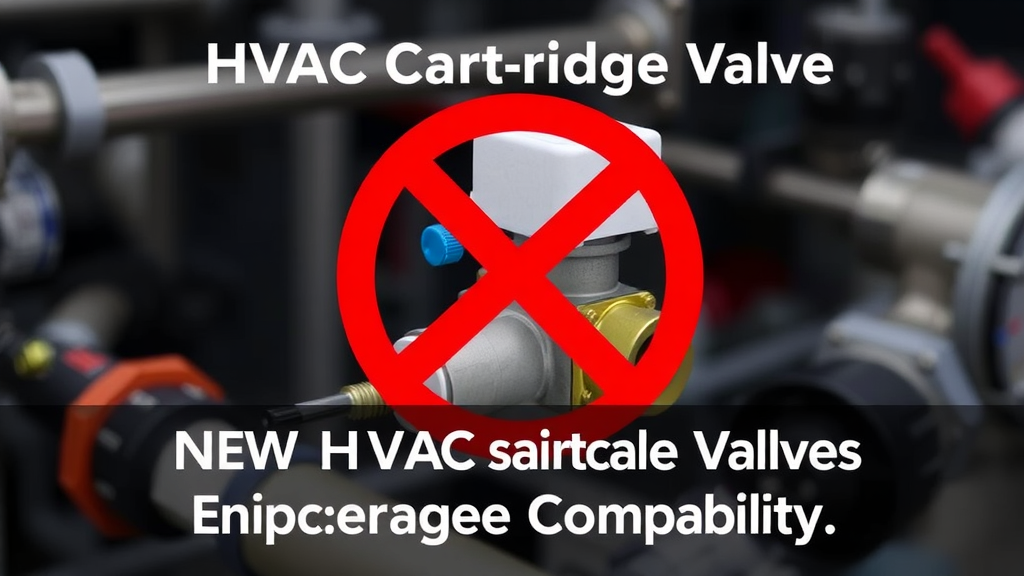
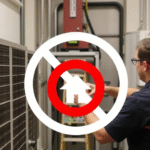
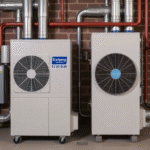
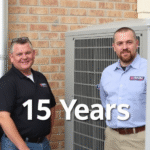
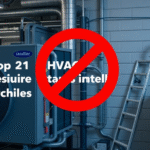
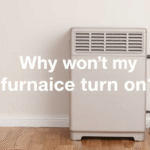
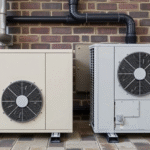
Leave a Reply